VIDEOSPHERE: You Are Always On A Screen Somewhere...
MFA Thesis
(2023)
Videosphere: A term coined by critic and theorist Gene Youngblood (Expanded Cinema, 1979) for describing the new video enviornment due to the mass connectivity of events through broadcast television.This new enviornment will be expanded further by future forms of video technology will infiltrate homes and industires causing video to reshape architectural and global mental space.
![]()
Today video still colonizes real space as a live signal. All spaces in which video is present become live places contaning events and actions. Television, Computers, Tablets, Smartphones, Cars, and Appliances all have video embedded in them. As we observe and interact with video we are simultaneously observed by machines. All around us are physical and virtual video surveillance cameras which are within and around the interface of video screens. Video’s technical purpose is to make things appear on screen and the conglomeration of installed and mobile video devices expands video applied purpose which is make the world totally surveiled. Wherever video occupies us we ineivtably appear on a screen somewhere else...
To address the physical presence and occupation with video technologies I created my own VIDEOSPHERE, as a site- specific installation with multiple assemblages of video camera and monitor circuits. Each assemblage was an exhibited site in what I considered to be a Video Archaeological Lab, that demonstrated the dynamics of video surveillance by observing audience participation and interactive performance. We become aware of a surveillance system by seeing ourselves in screens in the same enviornment that is simultaneously represented as video. The installation featured analog and digital video technologies such as: CRT monitors, LCD monitors, CCTV cameras, camcorders, digital projections, tablets, and a virtual reality headset.
This“Video Archeology Lab” contained different eras of technology is becasuse the passage of electronic signals from one era to another reveals how video past and present is a contunuation for expanding surveillance over many iterations. The spaces of physical and video signal are not truly seperate but indivisible as video has come to play an integral role as mass media and user interface. That the space outside and inside of video screens is equally observable. Yet as an installation with overt channels of observation the shock of so many cables, cameras, and lit screens fades out as interactivity between the audience and their transmitted appearance erase fearfulness of this raw surveillance system. There is no point at which a human observer can see and not be seen in the classical sense of private surveillance. Instead what we get is video watching and appearing with/within in itself, waiting to be activated and observed. The Videosphere operates openly.

Today video still colonizes real space as a live signal. All spaces in which video is present become live places contaning events and actions. Television, Computers, Tablets, Smartphones, Cars, and Appliances all have video embedded in them. As we observe and interact with video we are simultaneously observed by machines. All around us are physical and virtual video surveillance cameras which are within and around the interface of video screens. Video’s technical purpose is to make things appear on screen and the conglomeration of installed and mobile video devices expands video applied purpose which is make the world totally surveiled. Wherever video occupies us we ineivtably appear on a screen somewhere else...
To address the physical presence and occupation with video technologies I created my own VIDEOSPHERE, as a site- specific installation with multiple assemblages of video camera and monitor circuits. Each assemblage was an exhibited site in what I considered to be a Video Archaeological Lab, that demonstrated the dynamics of video surveillance by observing audience participation and interactive performance. We become aware of a surveillance system by seeing ourselves in screens in the same enviornment that is simultaneously represented as video. The installation featured analog and digital video technologies such as: CRT monitors, LCD monitors, CCTV cameras, camcorders, digital projections, tablets, and a virtual reality headset.
This“Video Archeology Lab” contained different eras of technology is becasuse the passage of electronic signals from one era to another reveals how video past and present is a contunuation for expanding surveillance over many iterations. The spaces of physical and video signal are not truly seperate but indivisible as video has come to play an integral role as mass media and user interface. That the space outside and inside of video screens is equally observable. Yet as an installation with overt channels of observation the shock of so many cables, cameras, and lit screens fades out as interactivity between the audience and their transmitted appearance erase fearfulness of this raw surveillance system. There is no point at which a human observer can see and not be seen in the classical sense of private surveillance. Instead what we get is video watching and appearing with/within in itself, waiting to be activated and observed. The Videosphere operates openly.
This exhition was used as source material for a written thesis called
VIDEOSPHERE: Video Surveillance Of The Video Screen Which can be found here at ProQuest
VIDEOSPHERE: Video Surveillance Of The Video Screen Which can be found here at ProQuest
Room 1: Self-Surveillance
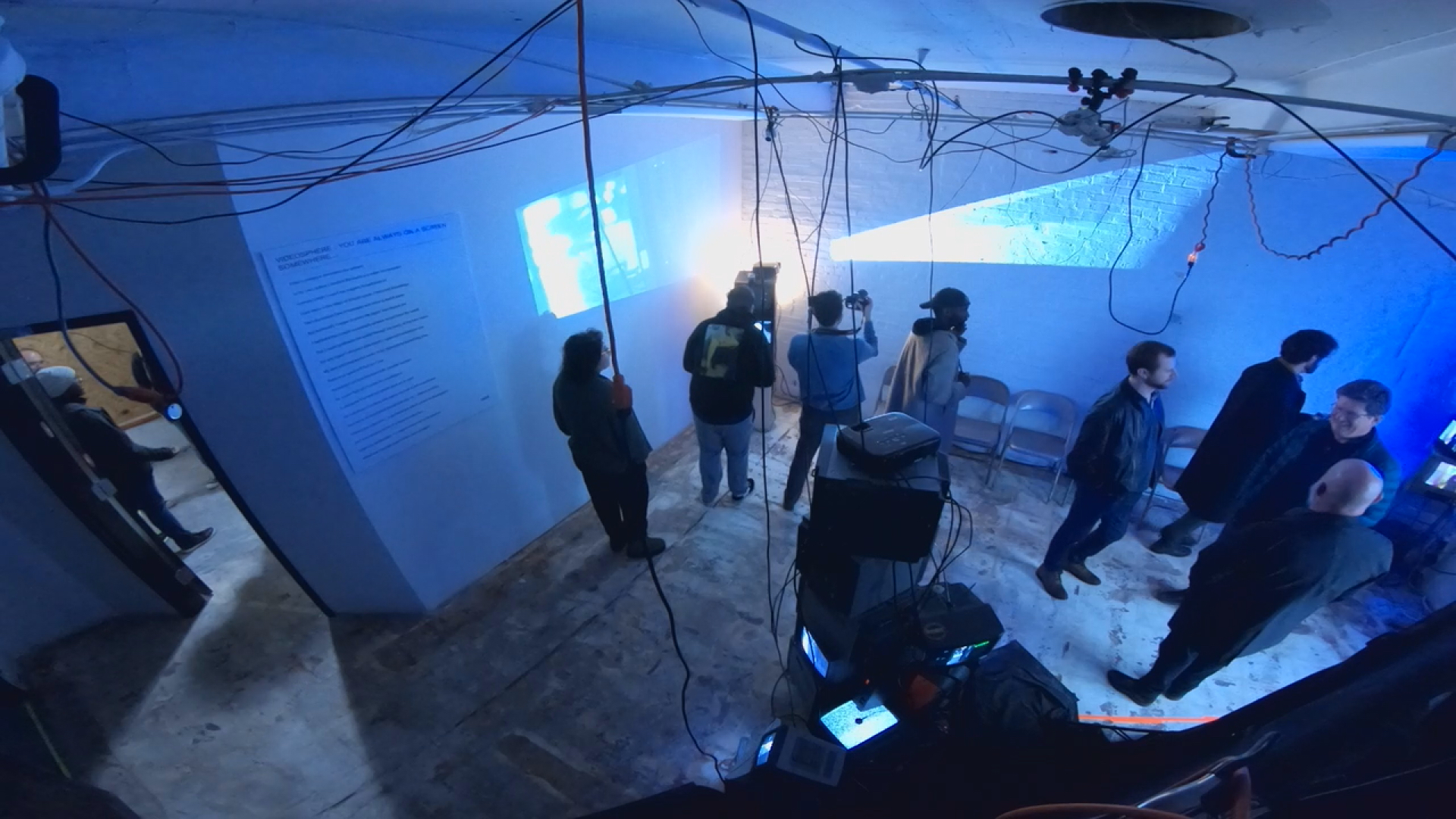
Wide Angle View of Room One - GoPro Circuit
When a viewer first entered VIDEOSPHERE, they see stacks of analog video monitors. These studio monitors represent a disassembled security video system. Instead of centralized observation, the studio monitors are turned in differenct directions while security cameras watch the monitors. These old technologies provoke a sense of surprise and bewilderment upon seeing so many screens that are now obsolete but were once the dominant way of seeing information. But video image as a box is an “other” object that attracts viewers to see what exactly is on screen. What they got was the room it self on multiple closed-circuit feeds. Within monitor screens is the presence of the monitors. And when the audience aproaches the monitors, the vieweres themselves appear on one screen, then turn and see themselves elsewhere. A game begins where invidivuals try to figure out which cameras are connected to which monitors and what monitors are displayed. Knowing the locations of overt or open surveillance can be resolved by using one’s own body to activate screens. Interactions with self-image and the screen serve to help the viewer understand dislocated space.
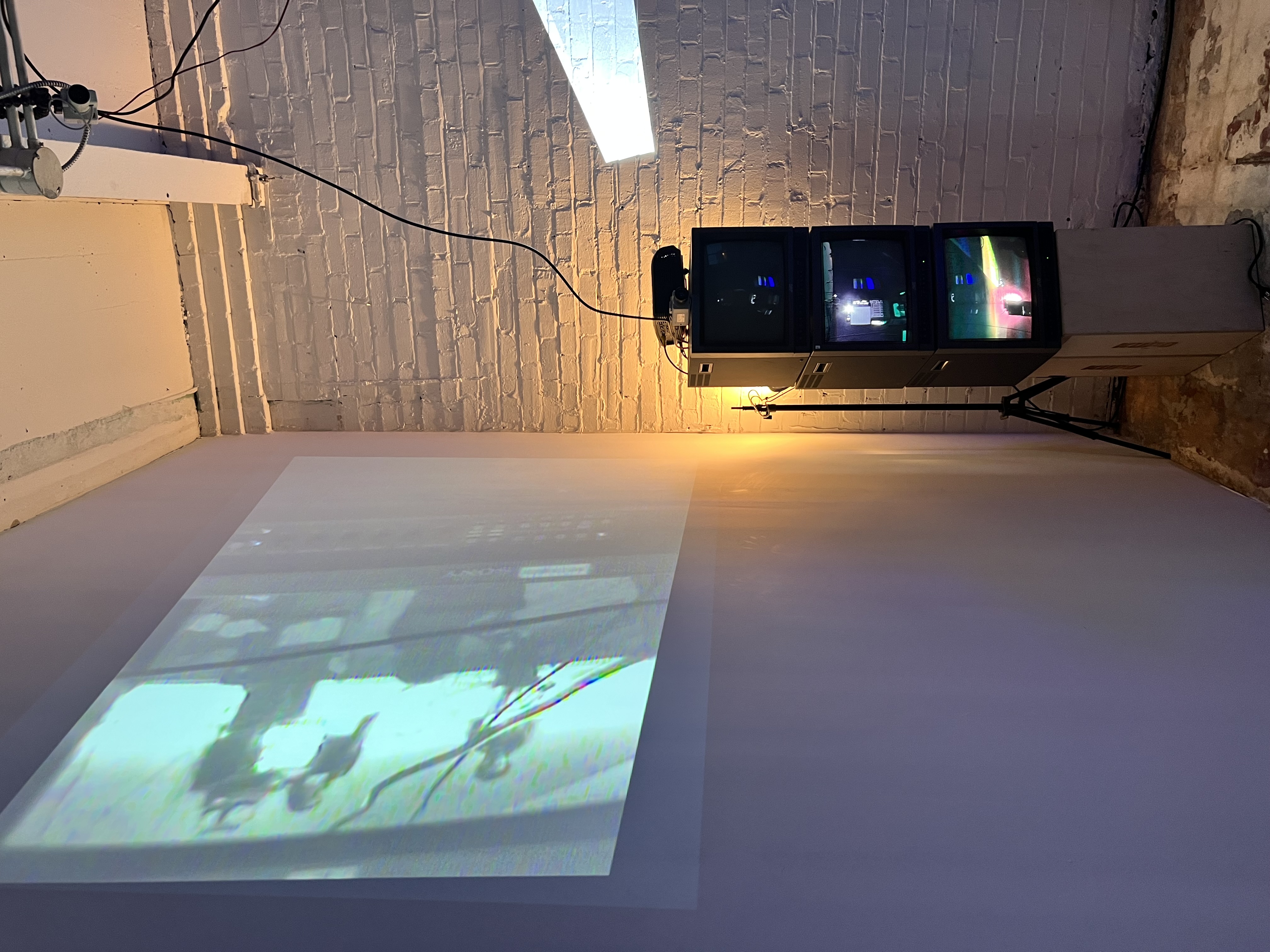
Influenced by the work of Bruce Nauman’s Video Corridor, this room was effective in turning the screen into a curious and inviting object. The surveillance system is made evident by an entanglement of wires, cables, hums, and CCTV equipment. The presence of so much video equipment makes a person alert to the fact that they are visible elsewhere. However, the presence of one self seen on a screen within an object invites a person to be an interactor. Consequently the observation space is what is being observed and that surveillance is represented in its own private feed. All viewers become incidental performers for screens for cameras that are merely surveilling surveillancy technology. The truly creepy occurence is that private video feeds made public of course subvert surveillance into an aproachable activity. Hesitancy or objections can be dissolved by the open play or narcissim of self-observation. Whether the audience members perform with their own image with sways, dance, repeating motions, or just watching the physcial and screen activity, nowhere can someone see Videosphere and not be seen by it.
Selfie Photo
Contact Microphone on tube monitor
Room One Self-Surveillance
The embedding of cameras into screens
Selfie Photo
iPad Video sent to PVM CRT
Pictured: Martin Freeman
Room 2: Closed-Circuits

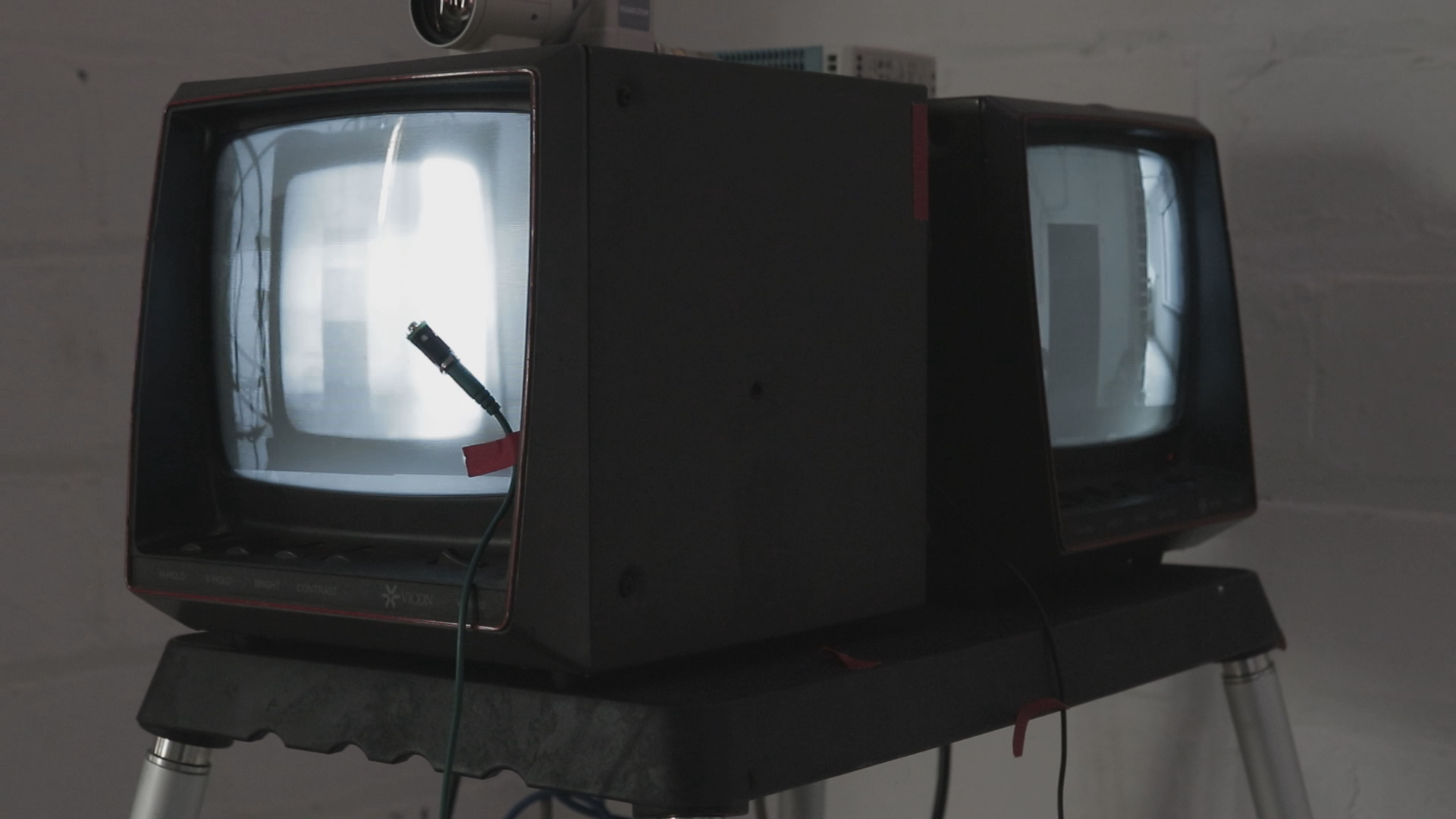
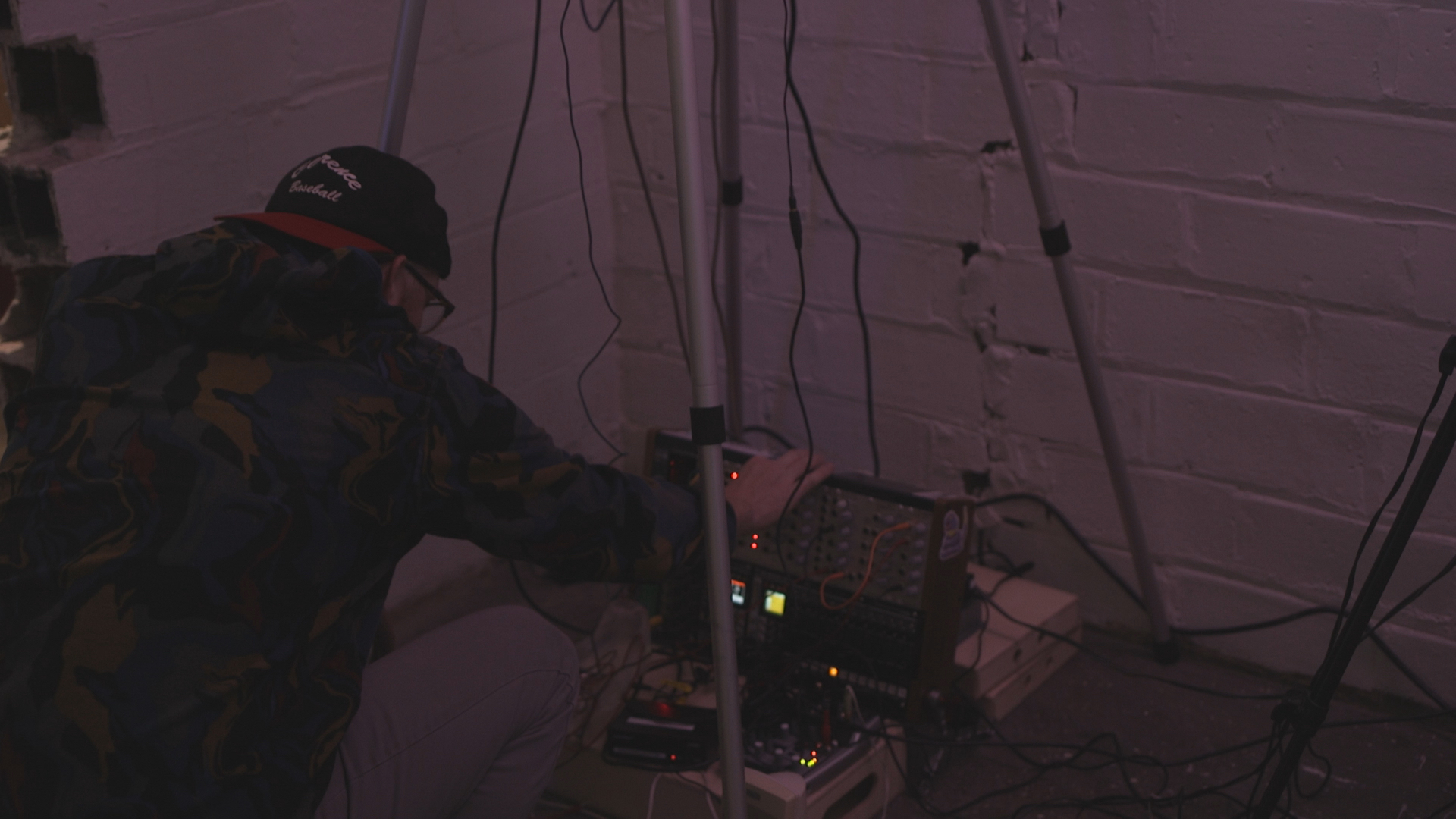
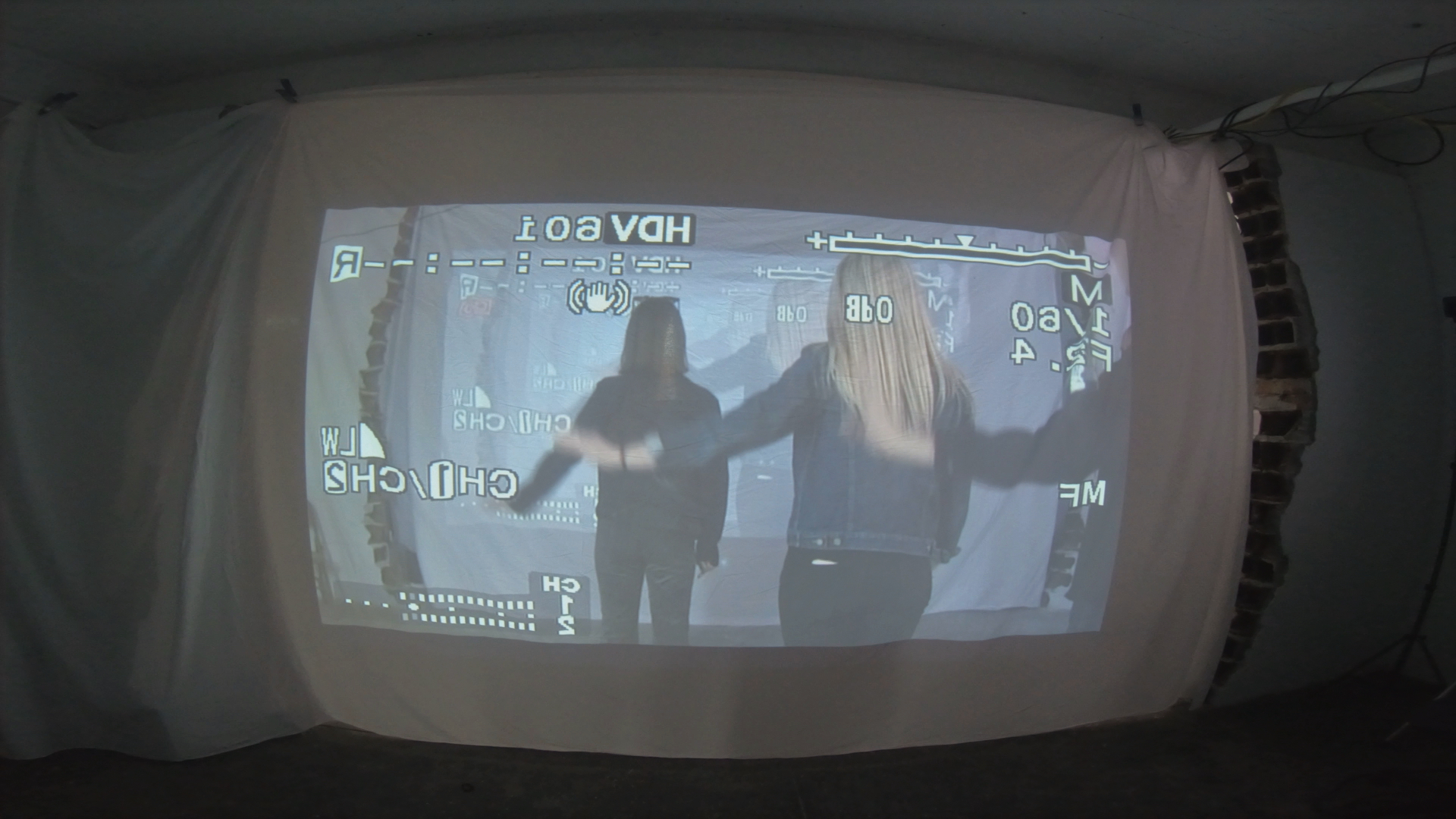
The Spy Manikan
Meant to signify surveillance done with personal devices. The model is equiped with two iPads. The iPad strapped to an arm is pointed at an LCD monitor which recieves a distant hall view from a camera positioned on the opposite end, picking up passing car traffic outside the exhibition windows.
Closed-Circuit Chatter
Rear Feedback Tunnel
A live camcorder display was wired to a short throw projector. The result is a feedback loop where interactors who stand in front of the camcorder see their backside but cast no shadow. Viewers are the opposite of the screen can see people facing away and toward the camcorder unseen, except when they step forward and cast shadow from the projected light. The set up harkens to the closed participation of early television programming. Both physical bodies and shadows create afterimages resulting in two kinds of feedback and interaction across two rooms.
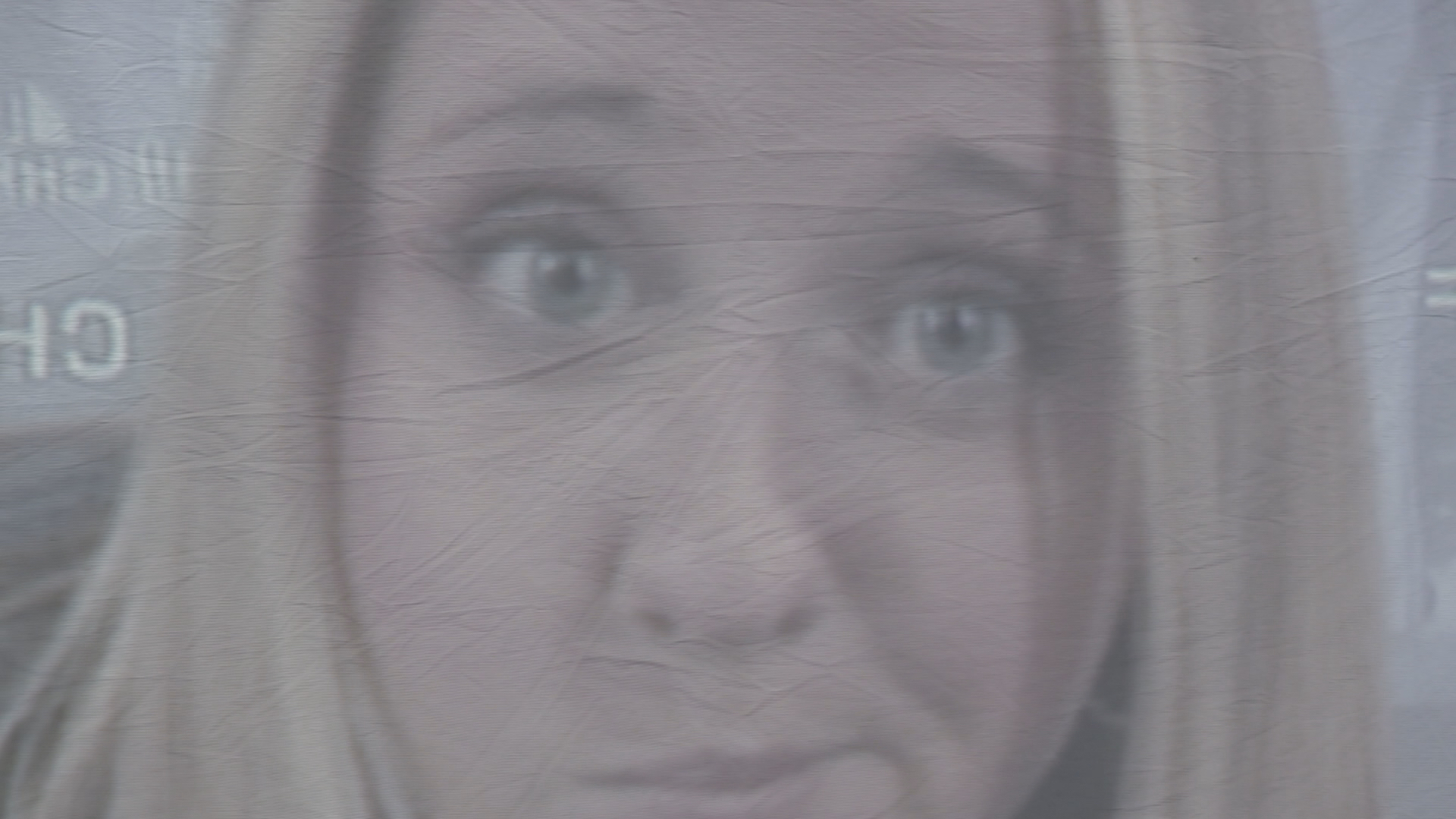


Black Partition Room: LIVE MIXER
In this room is a zoned off space using black fabric and stands placed in a vertex. Here the produciton of live video media is experienced through seperation and time differences of screens. What can be seen is a wide angle view of Room One and camera feed of the entry door. Yet the embedded webcam feed from an iMac is shared in and out of this room. The presence of anyone in this space is known via monitors placed in Room One and the audibility of individuals on both sides of the fabric dividers. But the the entrance of an individual is delayed by ten seconds. Visitors do not realize they are camera and people operating the mixing board do not always know that they can be seen on other screens.

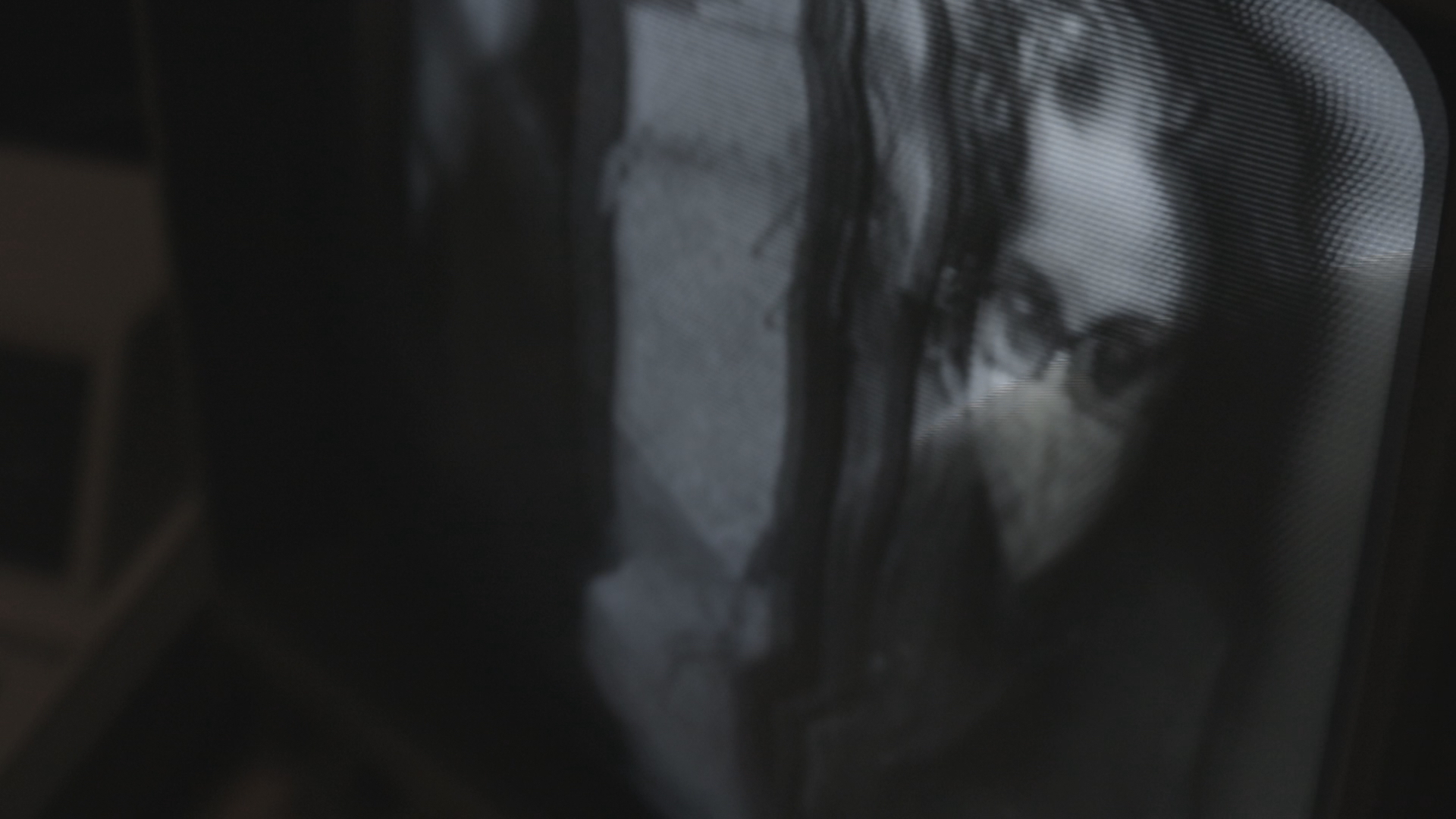
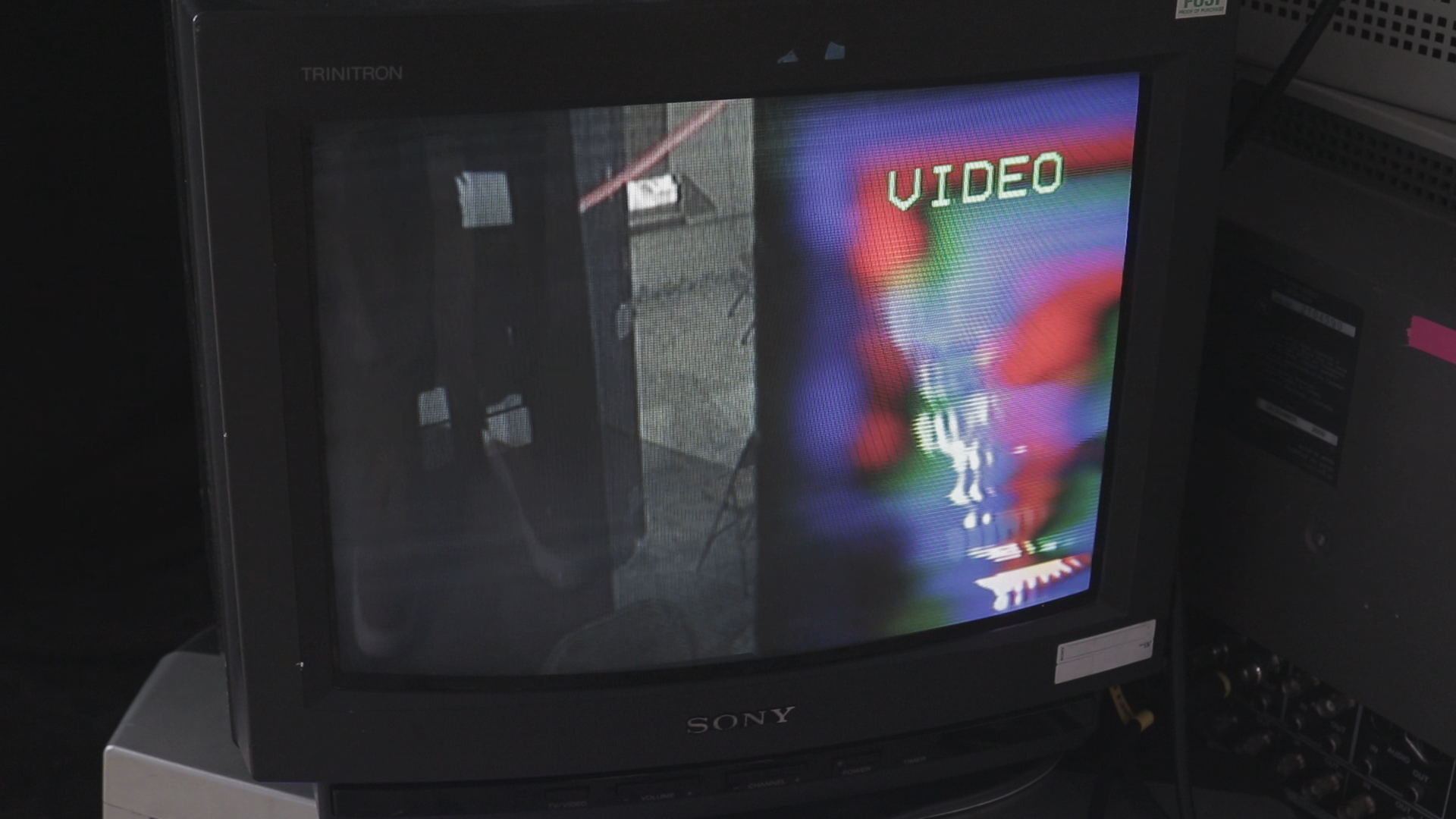

White Partition Room: Videosphere VR
Hidden behind the white sheet used for and black plastic strips, the White Partition room hosted the VR (Virtual Reality) version of a Videosphere. This virtual experience was viewable on an HTC Vive headset and a large flatscreen monitor whose media source was a Windows PC running a UNITY build. The virtual experience is yet another surveillance space that recieves camera feeds not seen on physical monitors. 3D objects were programmed to become surfaces for webcams located in the exhibition. My reason for including VR is because it is video based.
![]()
VR headsets also remove a wearers visual reference of real space and their physical apperance. Yet by seeing one self on 3D object screens a person can see themsleves move around while other bystanders can view their first person sight on the monitor. The result is another shared viewing and performance inside and outside a literal video enviornment. Similar to Room One, an inversion of surveillance happens. Whereas the physical multiple cameras and monitors were identified by people locating themselves with gesutre and motion the Videosphere VR reconnects a viewer with their body.
But throughout the floor, ceiling, and other TV shaped objects another texture besides a webcam feed is mapped out in Videosphere VR. Inside is a feedback loop generated by virtual cameras that are invisible due to no representation attached. Even within VR not can a viewer be seen on a screen but the scene itself is watching itself. Video is observing a video mapping. Even the viewpoint of the headset is not natural vision. What is confused for natural sight is really a virtual camera mounted in virtual space. The pivot mechanism is the body of the wearer who explores Videosphere physciall and virtually but is none the less an actor in their own subjection to surveillance.
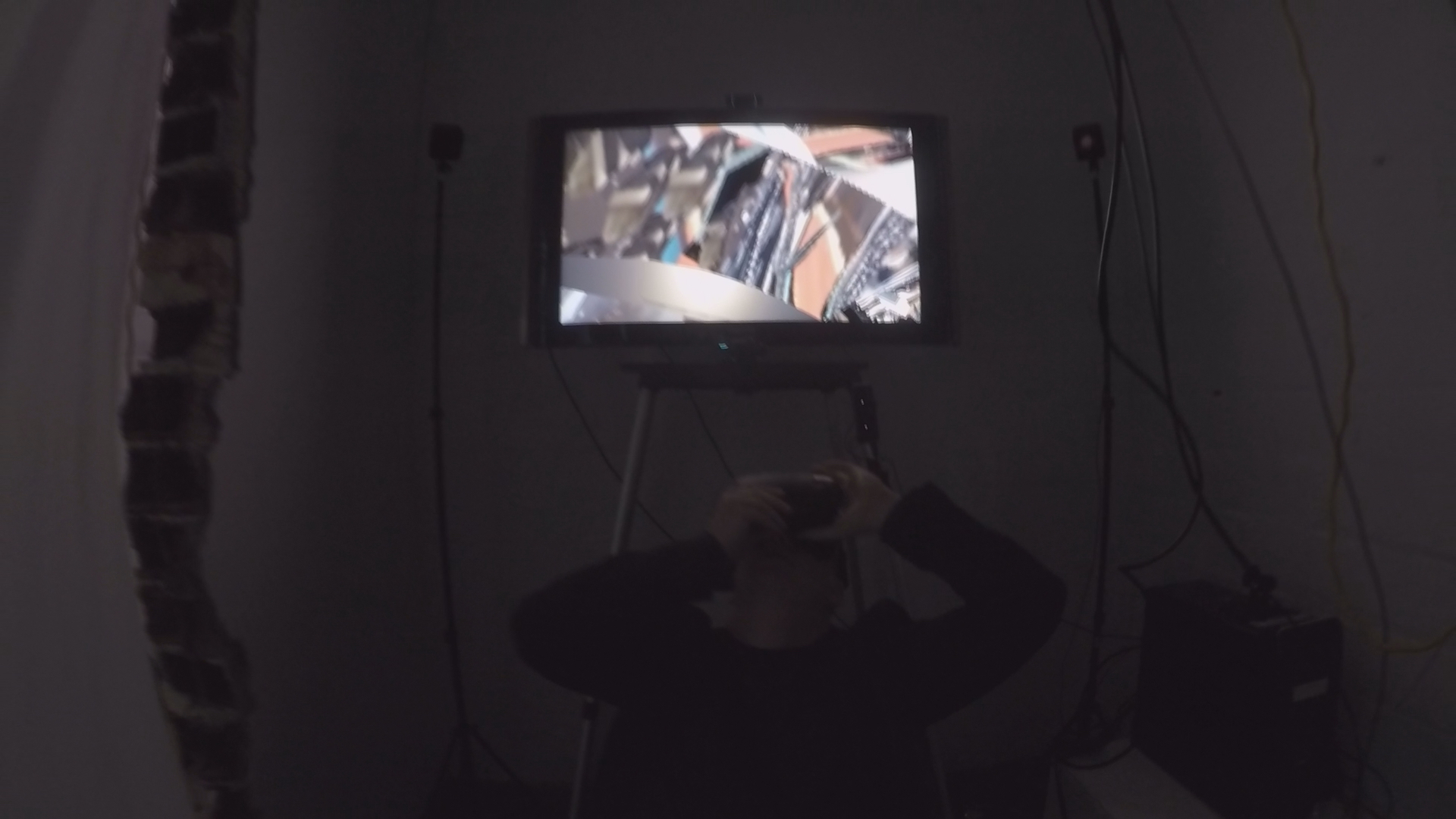

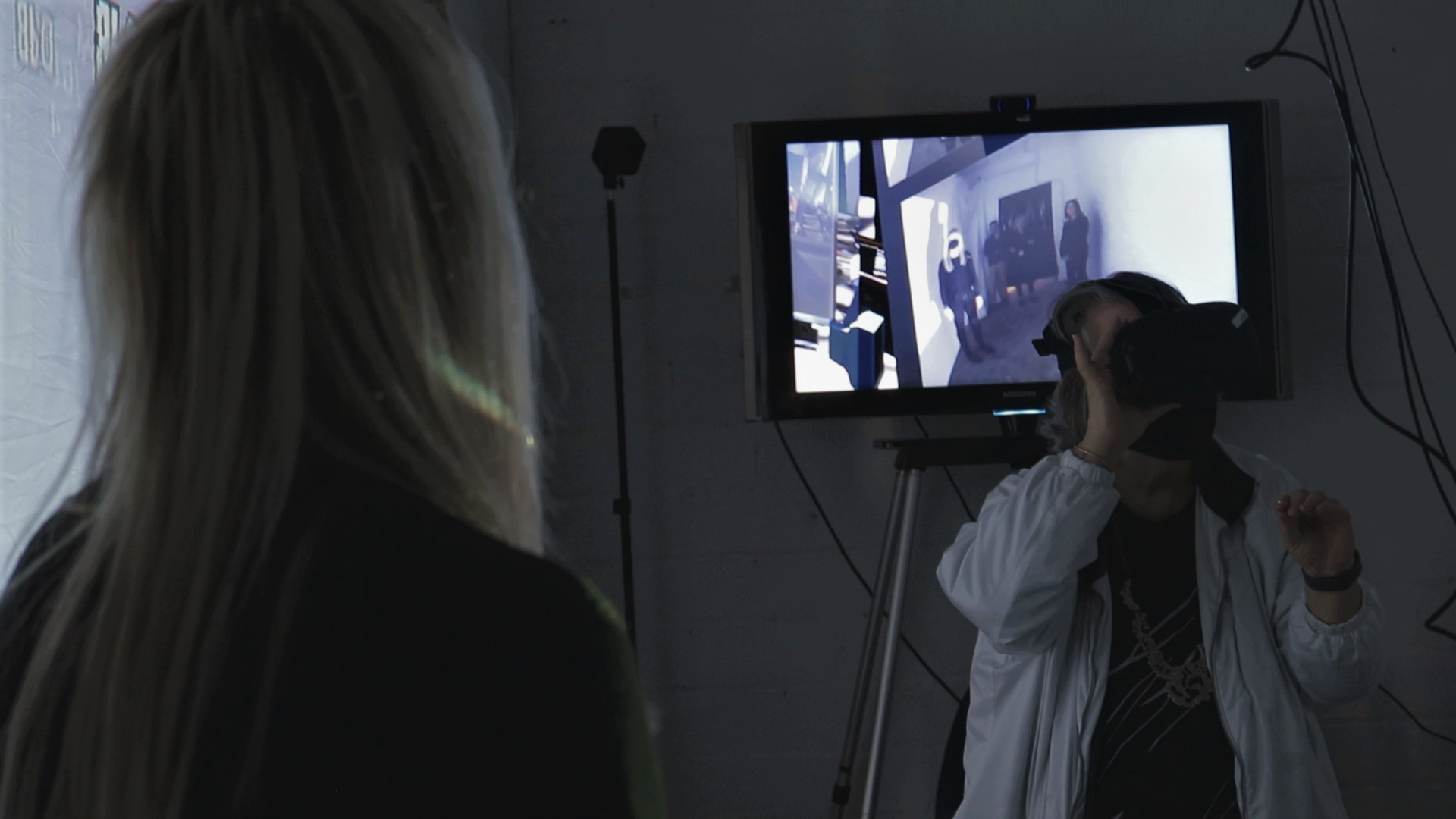
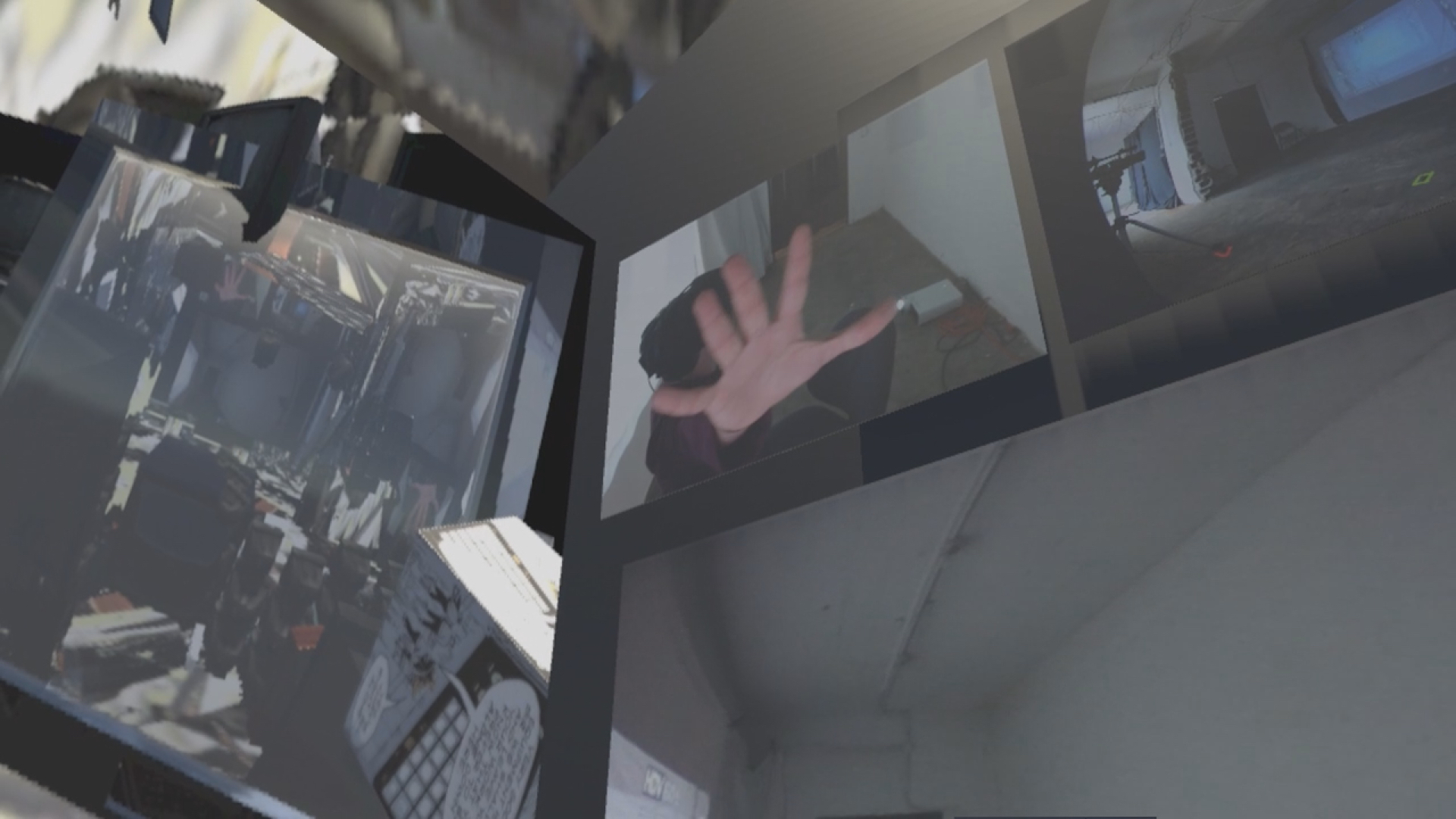
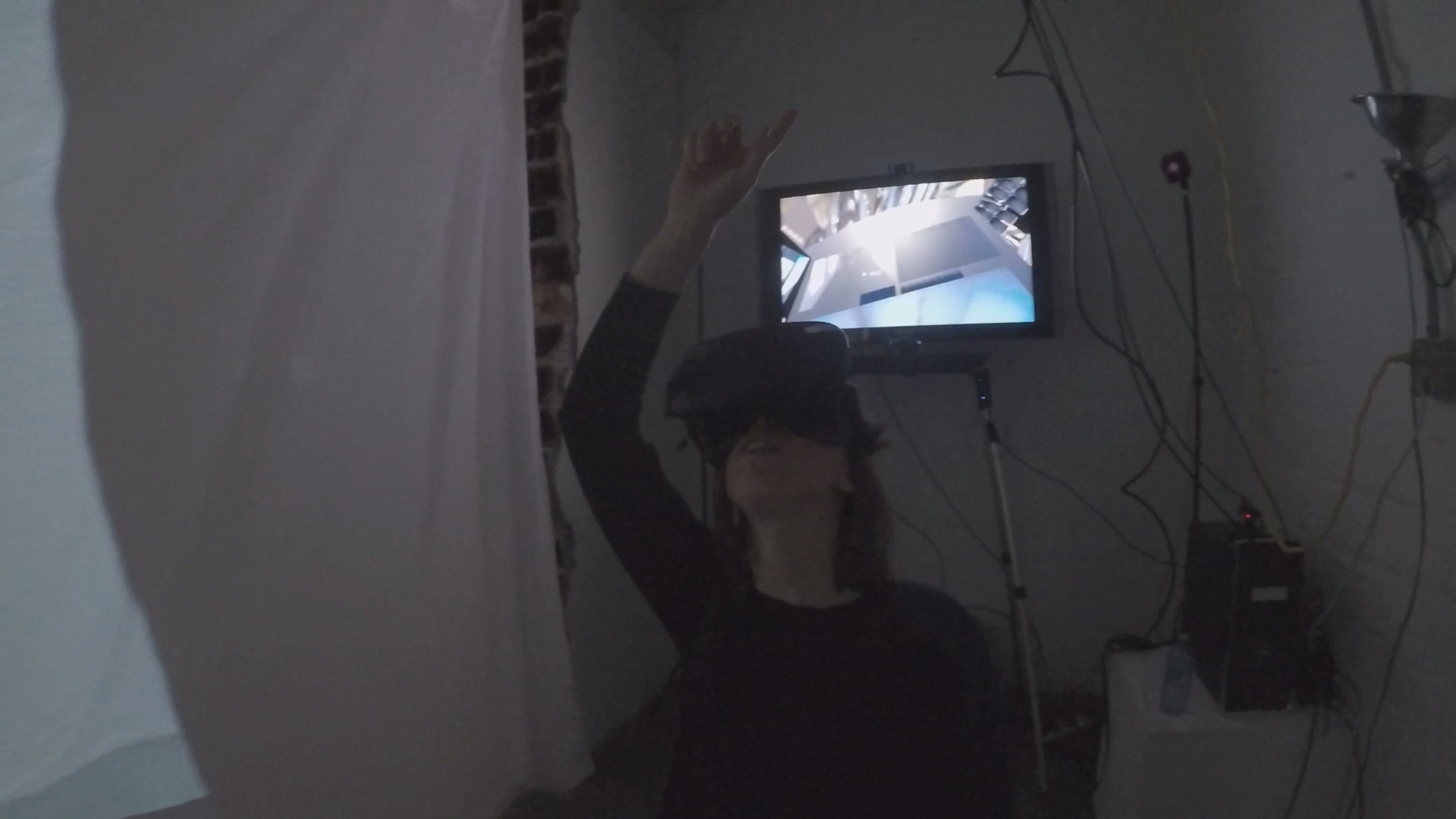

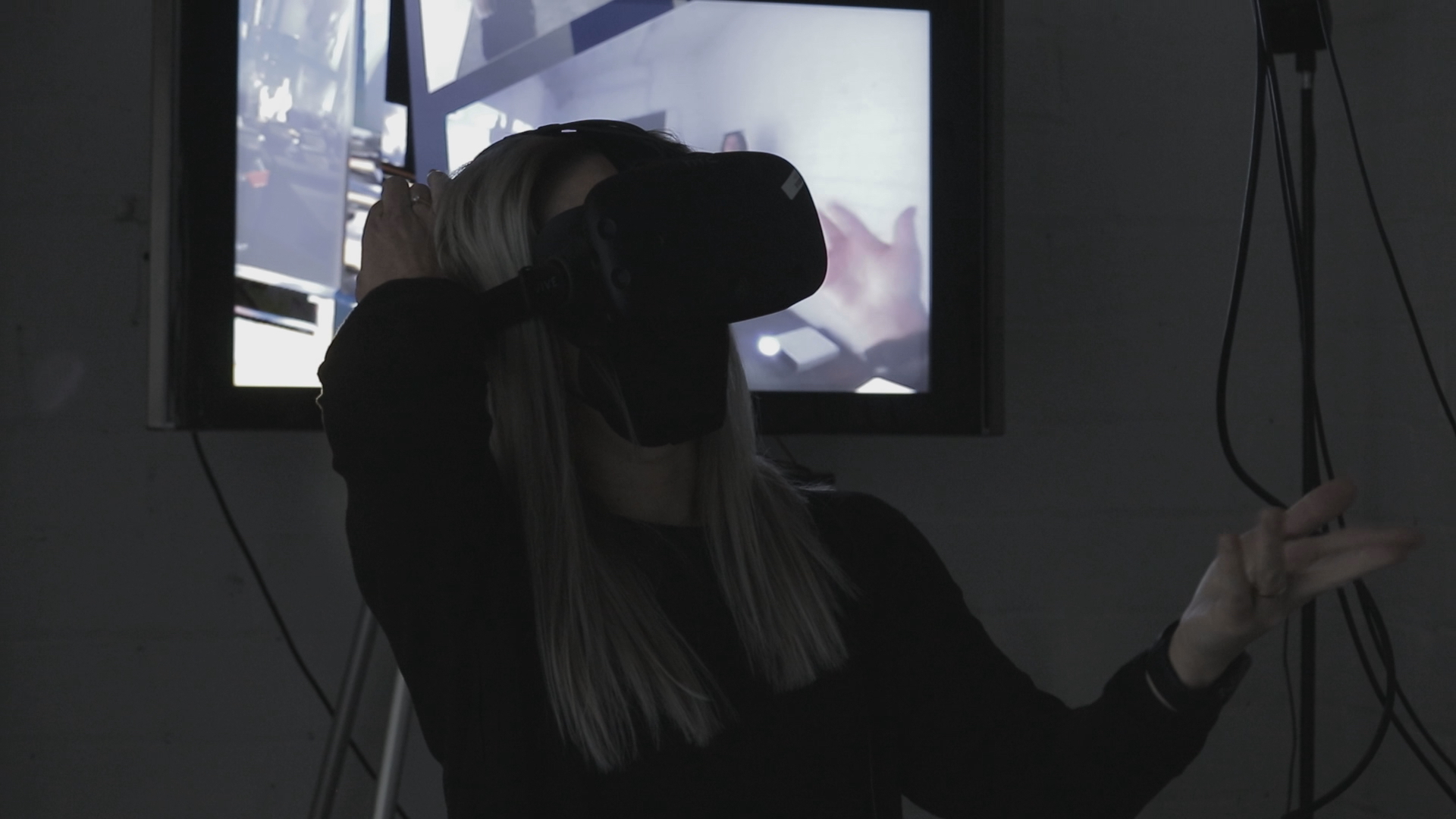





Unity Project Window View
Site Images
Pre-Production Center For The Arts


Hours & Location
1270 Niagara Street Buffalo, NY 14213
2nd Floor Adjoined by Buffalo String Works
Opening Reception - Friday April 28th 6PM-9PM
Saturday April 29th 2PM-5PM
Sunday April 30th Closed
Friday May 5th 4PM-6PM
Saturday May 6th 6PM-9PM
Sunday May 7th 5PM-8M
*May 1st through 4th by Appointment Only macherno@buffalo.edu
Thesis Commitee Faculty Members
Associate Professor Mark Shepard (Chair)
Assitant Professor Jason Gesitweidt
Professor Dave Pape
Assitant Professor Sama Waham
Sponsers
Breeser Development Group LLC
Department of Media Study | University at Buffalo
UB Graduate Student Association
Saturday April 29th 2PM-5PM
Sunday April 30th Closed
Friday May 5th 4PM-6PM
Saturday May 6th 6PM-9PM
Sunday May 7th 5PM-8M
*May 1st through 4th by Appointment Only macherno@buffalo.edu
Thesis Commitee Faculty Members
Associate Professor Mark Shepard (Chair)
Assitant Professor Jason Gesitweidt
Professor Dave Pape
Assitant Professor Sama Waham
Sponsers
Breeser Development Group LLC
Department of Media Study | University at Buffalo
UB Graduate Student Association
Artist Statement
But is the installation a point of surveillance or interactivity? By arranging cameras and screens people will always appear on a screen in which we see ourselves and others and the contents of one screen looked at becomes the content of another screen. However this installation is not about just human beings apearing on a screen. This Videosphere is about being seen with video. It is a system arranged to be a self-surveillance of videos presence. The live images beg to viewed, interacted, and recorded not by users, viewers, or operators. In this performative space everyone is an interactor. And as for surveillance video, there is no point in which someone can privately view the exihibit without being seen themselves. Instead we should be aware that our dependence upon video as interface means that we are always appearing on screens without exact knowledge of when, where, and whom. Videosphere, is about video self-communicating through modulations. The only information in the actual exhibit is whatever can be interacted with.
Special Thanks:
Laura Maloney
Bill Breeser
Matthew Schery
Ellen Chernoff
Ian Hunter
Mitch
Bill Breeser
Matthew Schery
Ellen Chernoff
Ian Hunter
Mitch
Carl Lee
Mike Bouqard
Alex Reid
Paige Sarlin
Elaine Schwartz
Mike Bouqard
Alex Reid
Paige Sarlin
Elaine Schwartz
Mark Shepard
Jason Gesitweidt
Dave Pape
Sama Waham
Famous Clark
Cort Lippe
Jason Gesitweidt
Dave Pape
Sama Waham
Famous Clark
Cort Lippe
Olurotimi Akanbi
András Blazsek
Tim Georger
Jesse Rodkin
Lewuga Benson
András Blazsek
Tim Georger
Jesse Rodkin
Lewuga Benson
Alex Casetti
Bello Bello
Walker Tufts
Kelsey Rupe
Rachel Galet
Ana Lavatelli
Bello Bello
Walker Tufts
Kelsey Rupe
Rachel Galet
Ana Lavatelli
Bill Sack
Bernard Dolecki
Jon Bolt
Salem Browning
Matt Kenyon
Peer Bode
Bernard Dolecki
Jon Bolt
Salem Browning
Matt Kenyon
Peer Bode
About Me ︎ Curriculum Vitae
Project Index︎︎︎
2023
Videosphere: You’re Always On A Screen Somewhere...
Brown Bunny
Inertia
2022
MAX Jitter Programming
FxR Versus AhR
Async Rolling
Always On
Enframing Rey
The Vidiot
Computer Home Entertainment
2021
Machine Learning: ATM
Pursuing Earth
THE LIBERTARIAN
Wiley World Wide Weather
ReWind Compressor
Discarding Earth
Being A Passenger
2020
Can(t) See Me Now!
ColorPress Brush
White Ball Flux Brush
THE APP
2019
PATS
2018
Ice Cream Drone
2015
Vanilla ISIS
2017
Invisible Foci
2014
Digital Synthesis Illustration
2013
Rood World
Synthesis Ilustration
2011
Verse
Master (Series)
Video Being
2010
Dance Aches
Bangalor
︎ macherno@buffalo.edu
︎ videoarchaeology
︎ michaelchenoff
︎ michaelchernoff
︎ videosignified
︎ michaelchernoff
︎ Videosphere
©2010-2023 Michael Chernoff